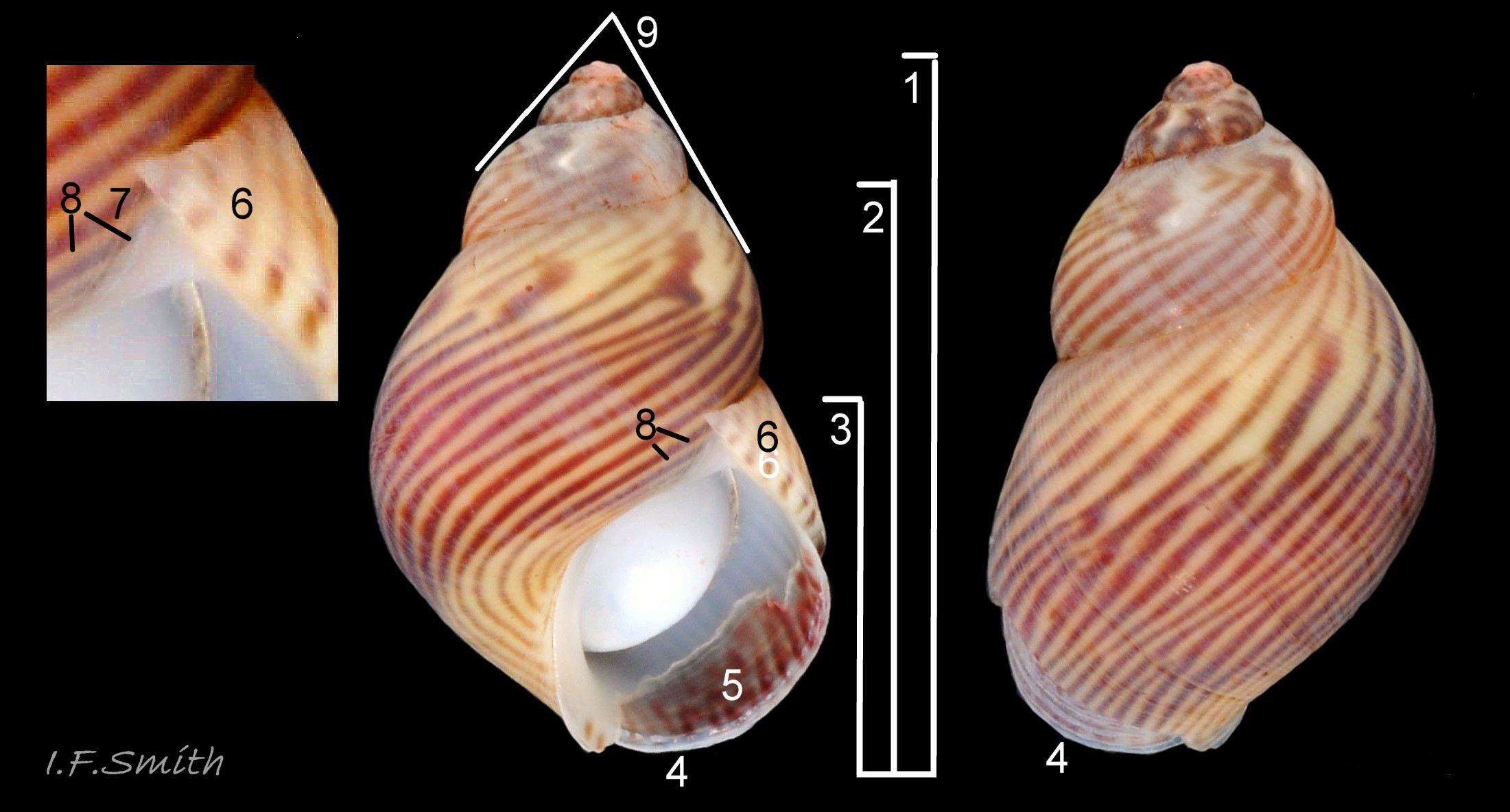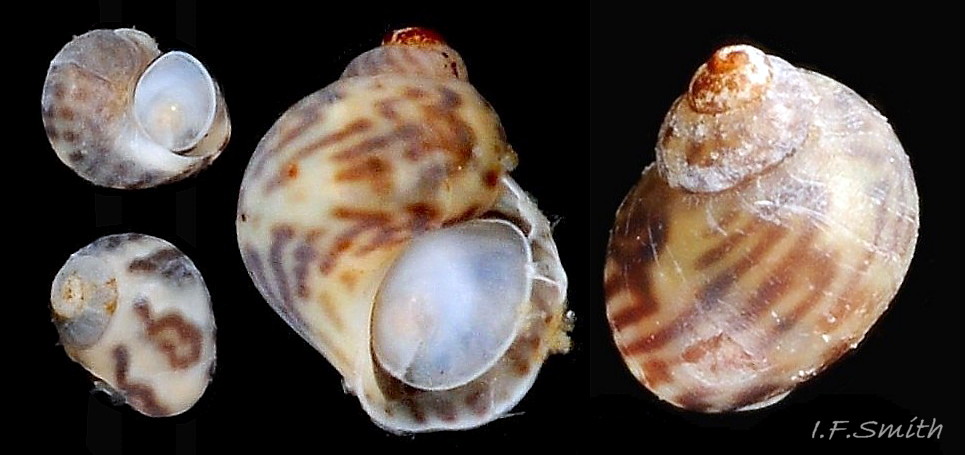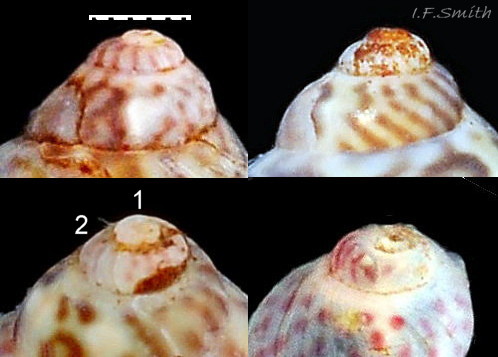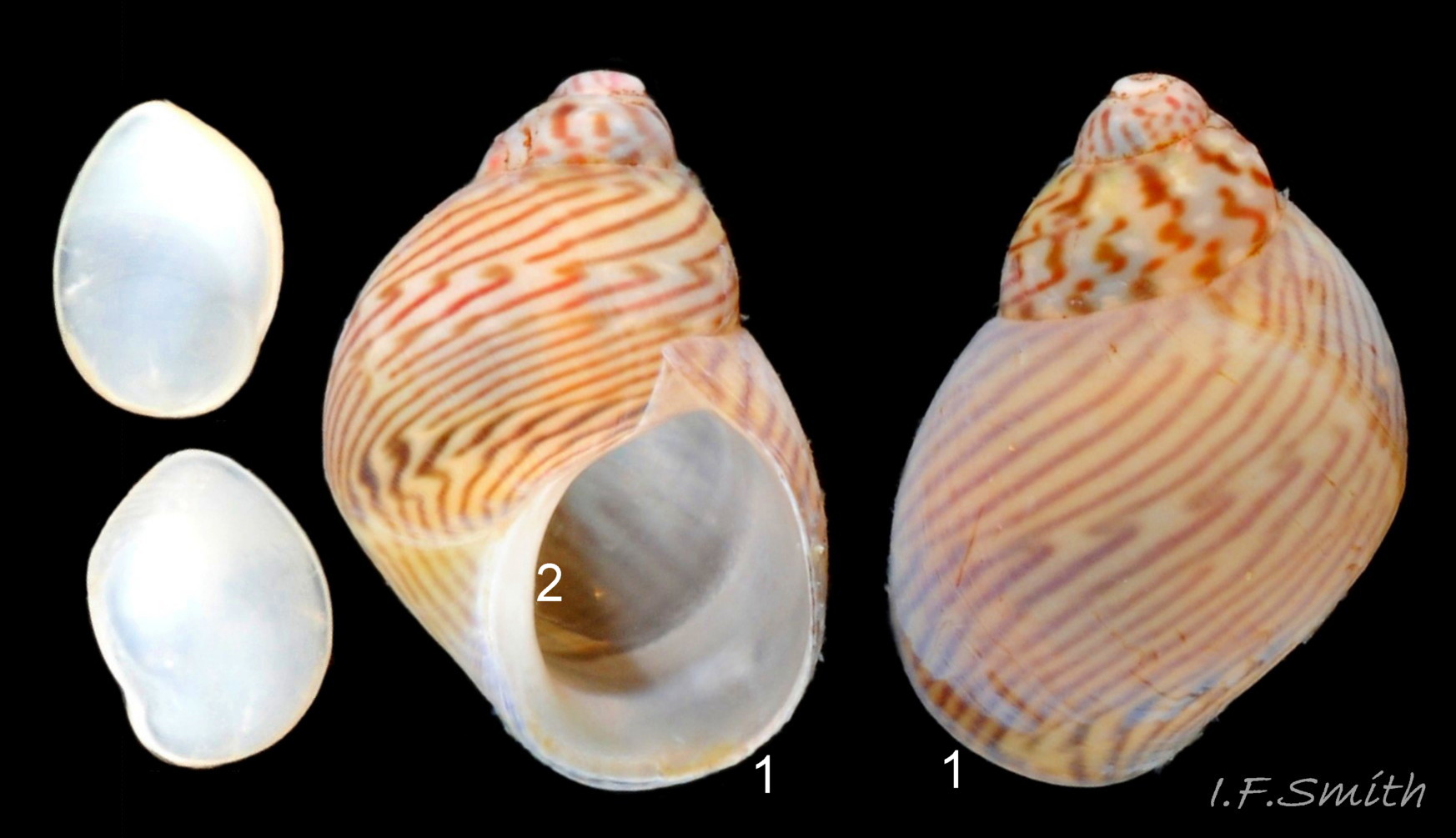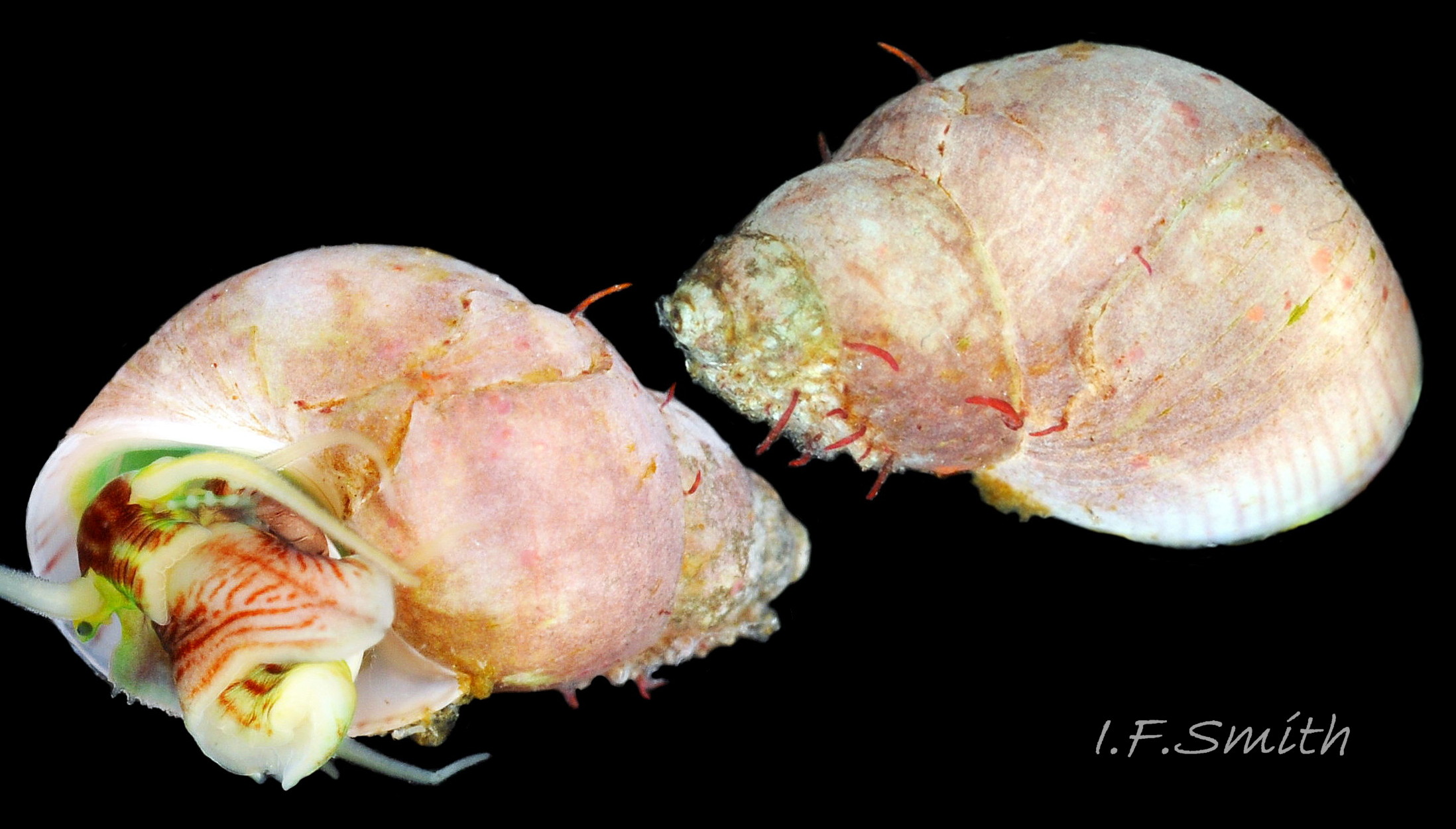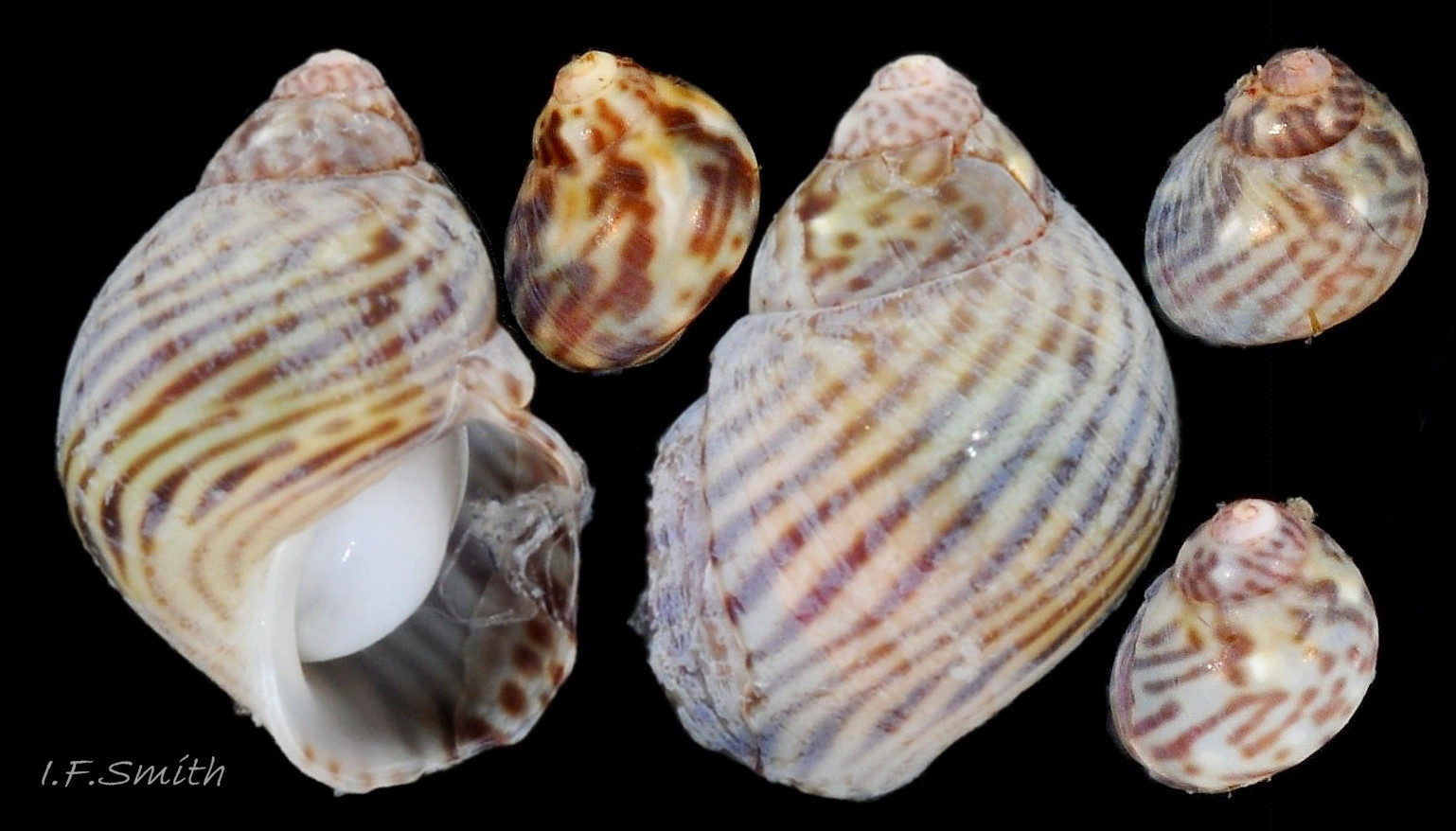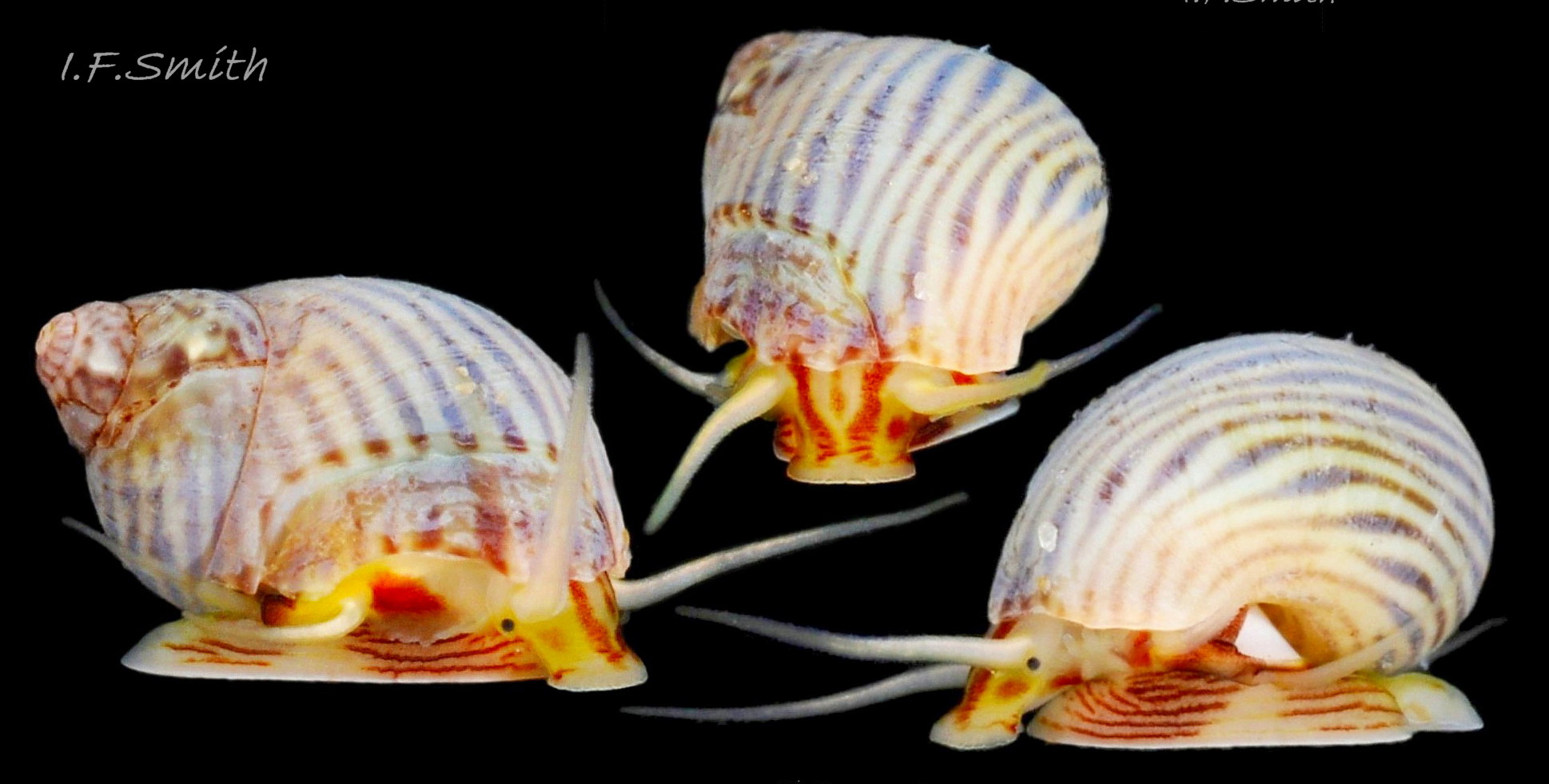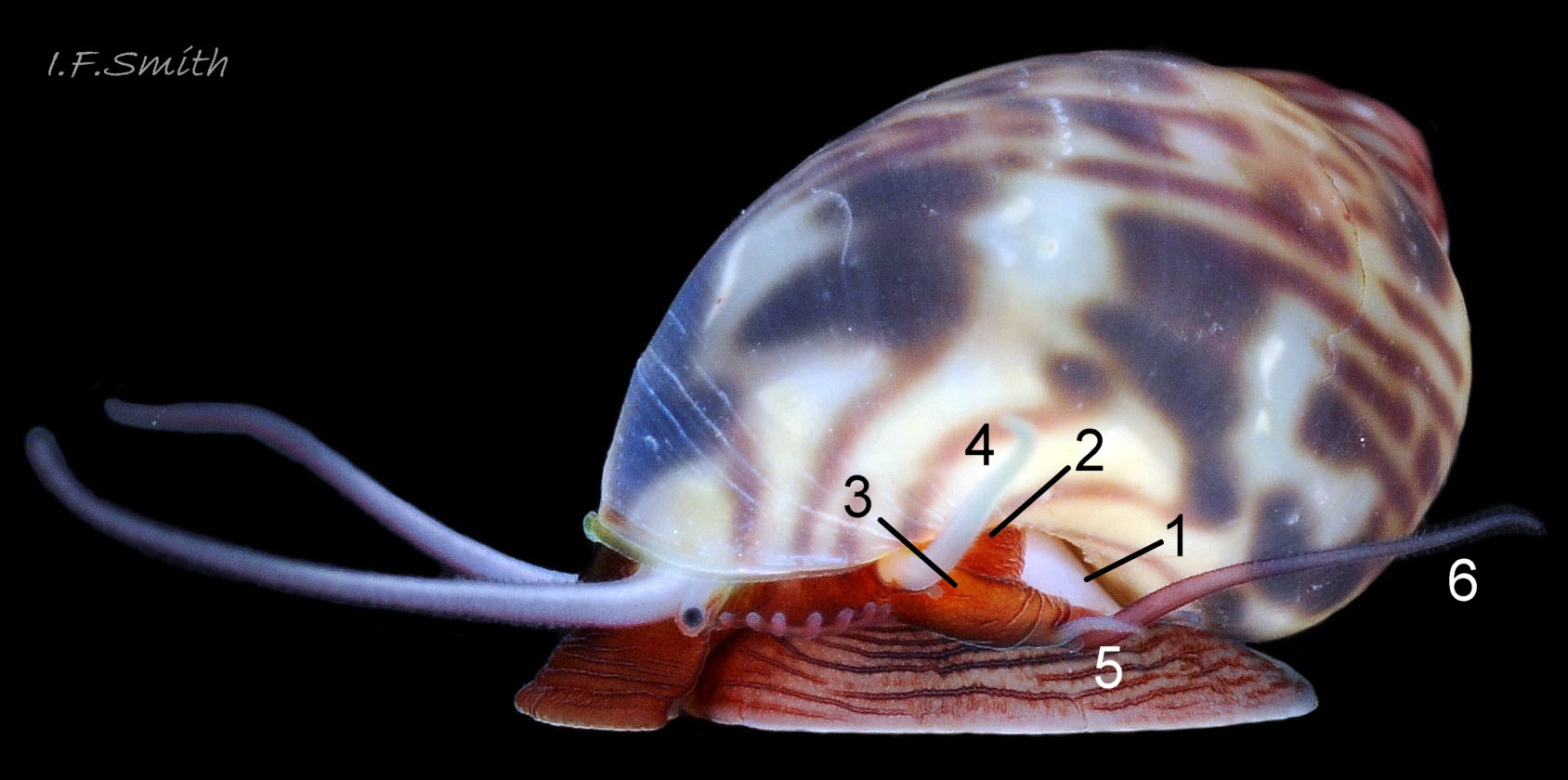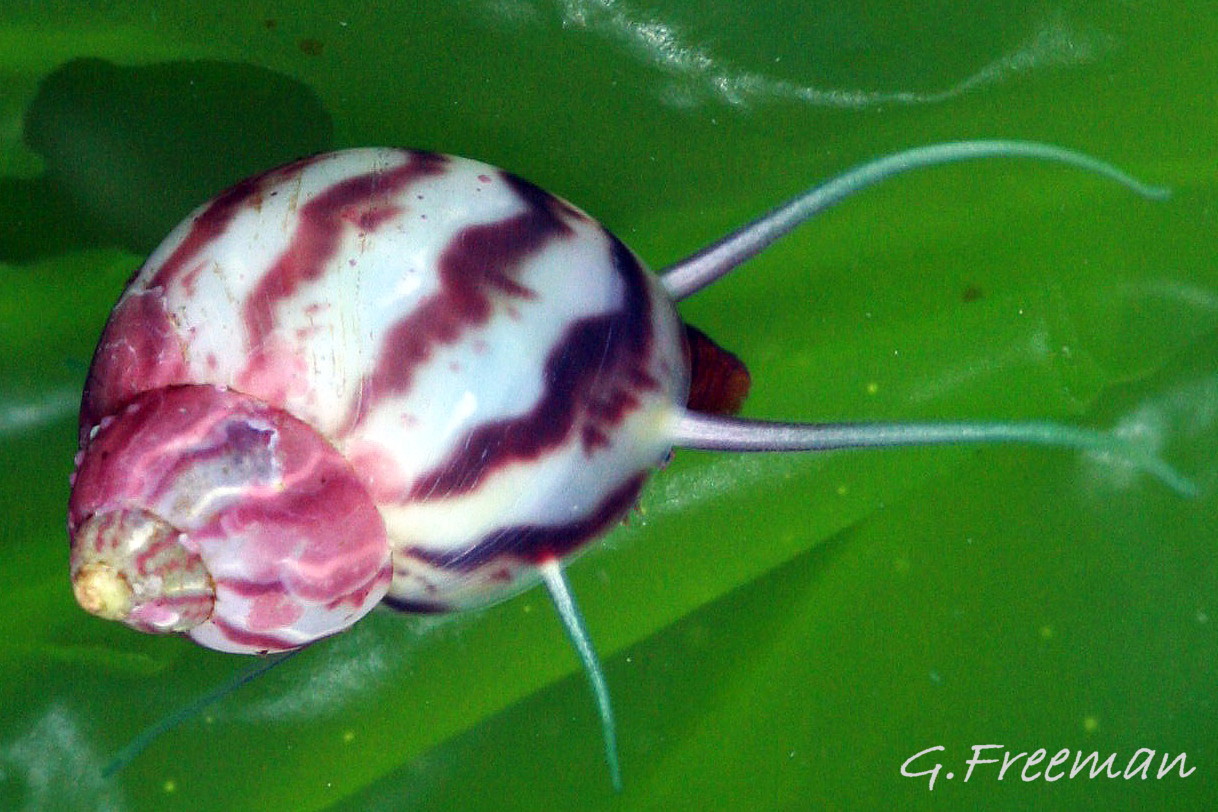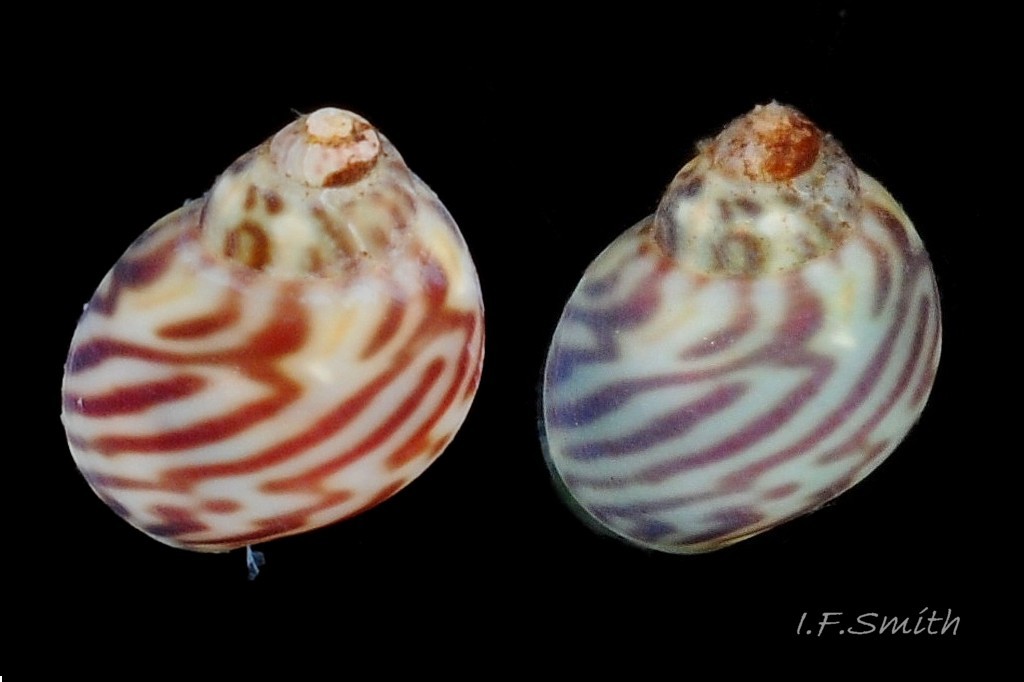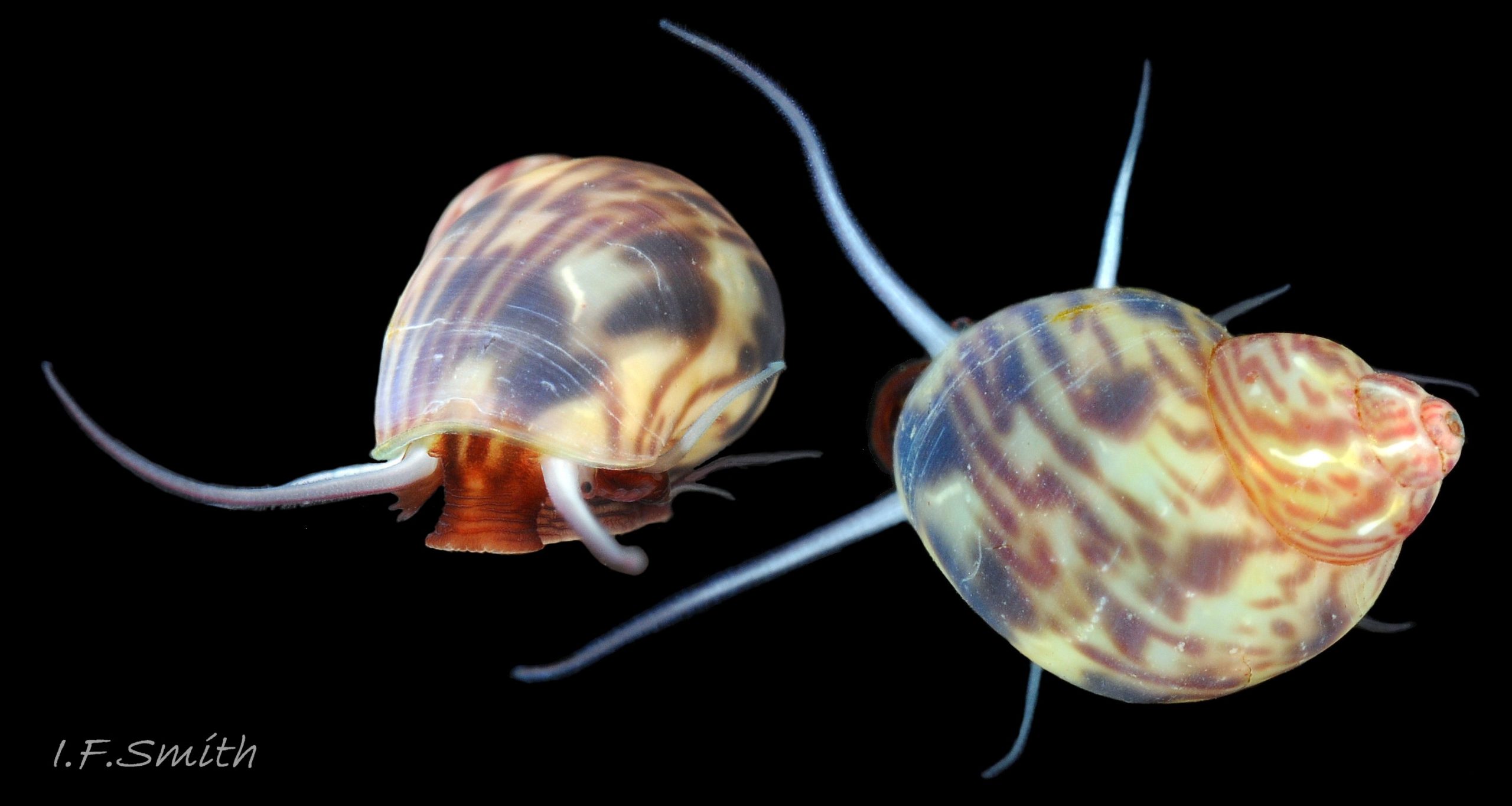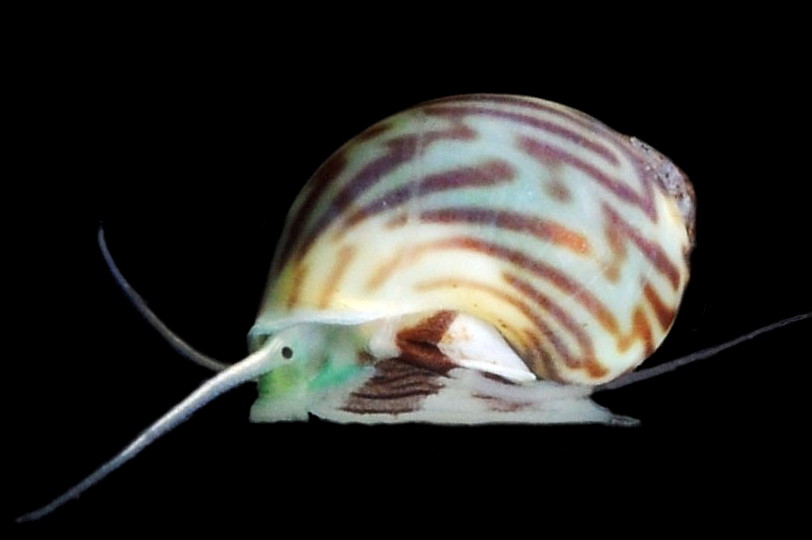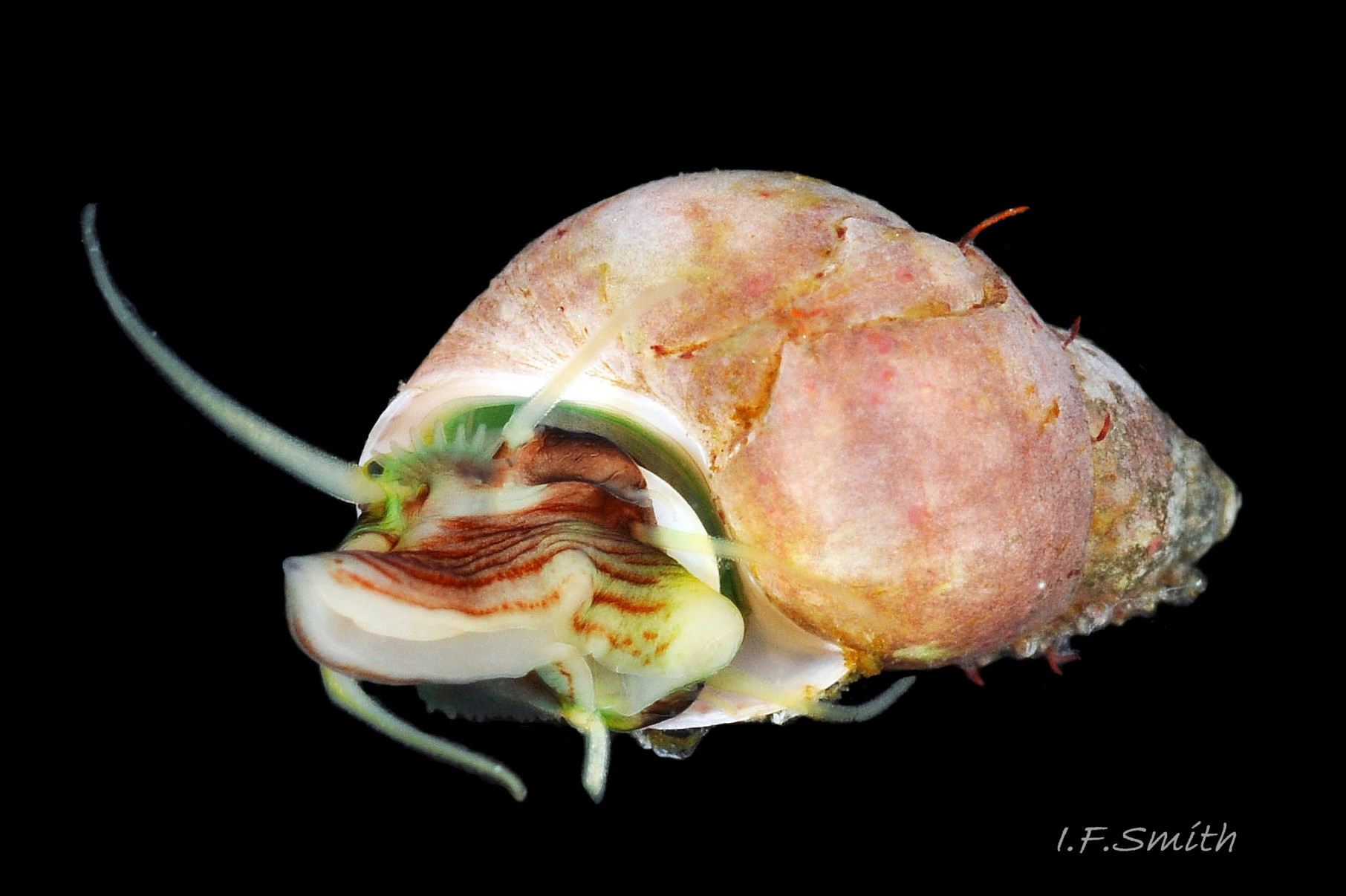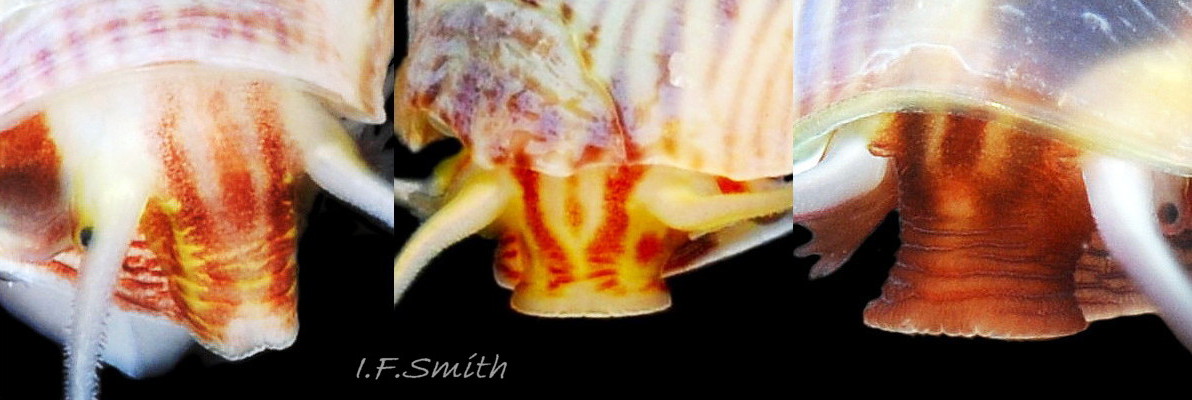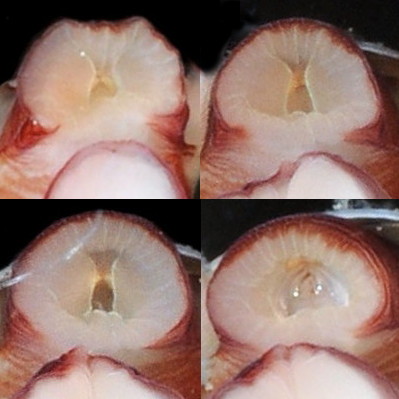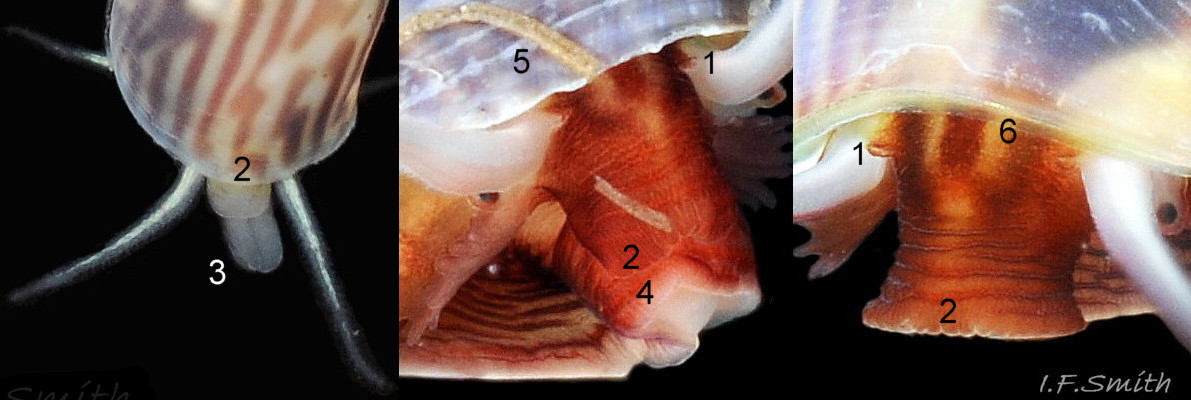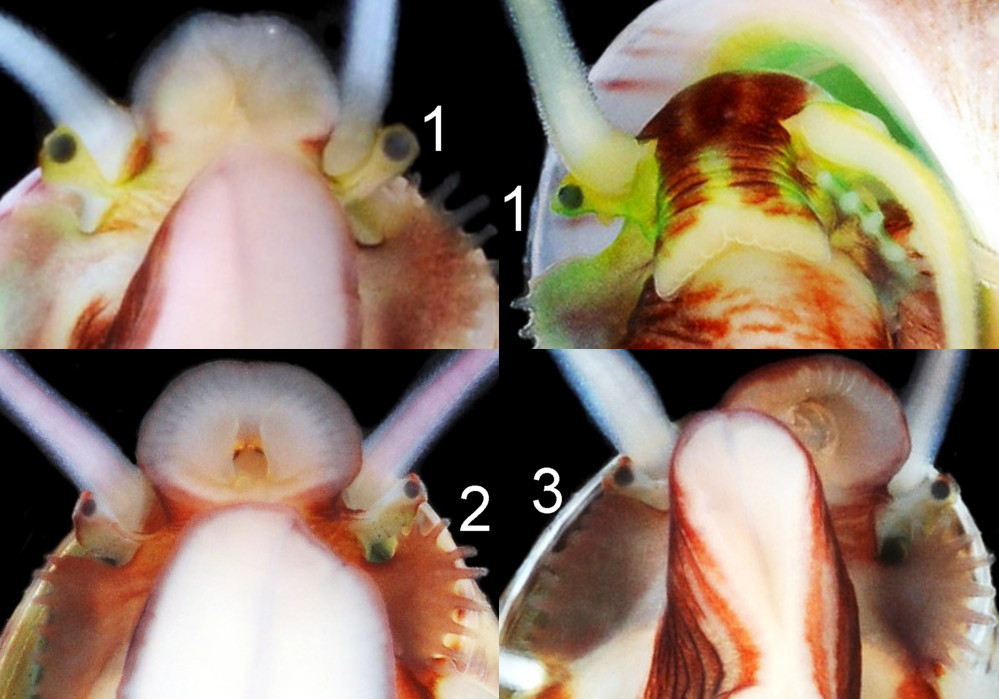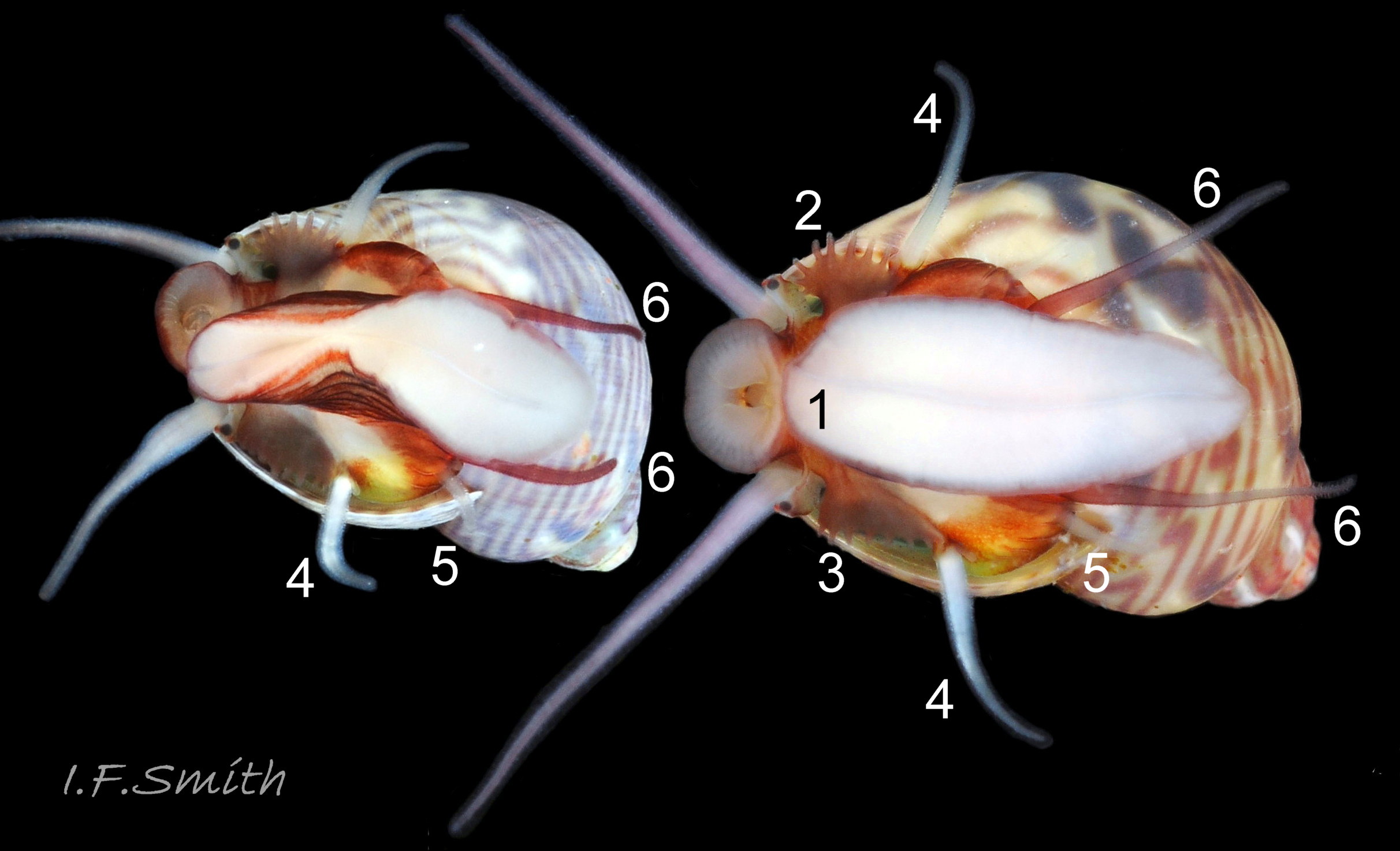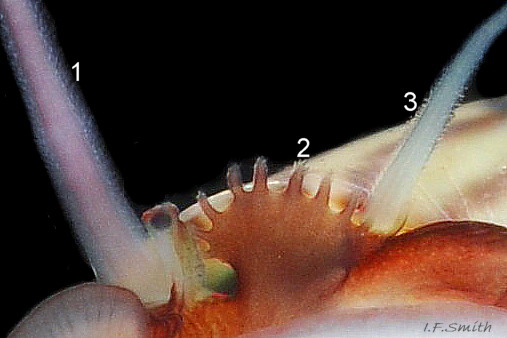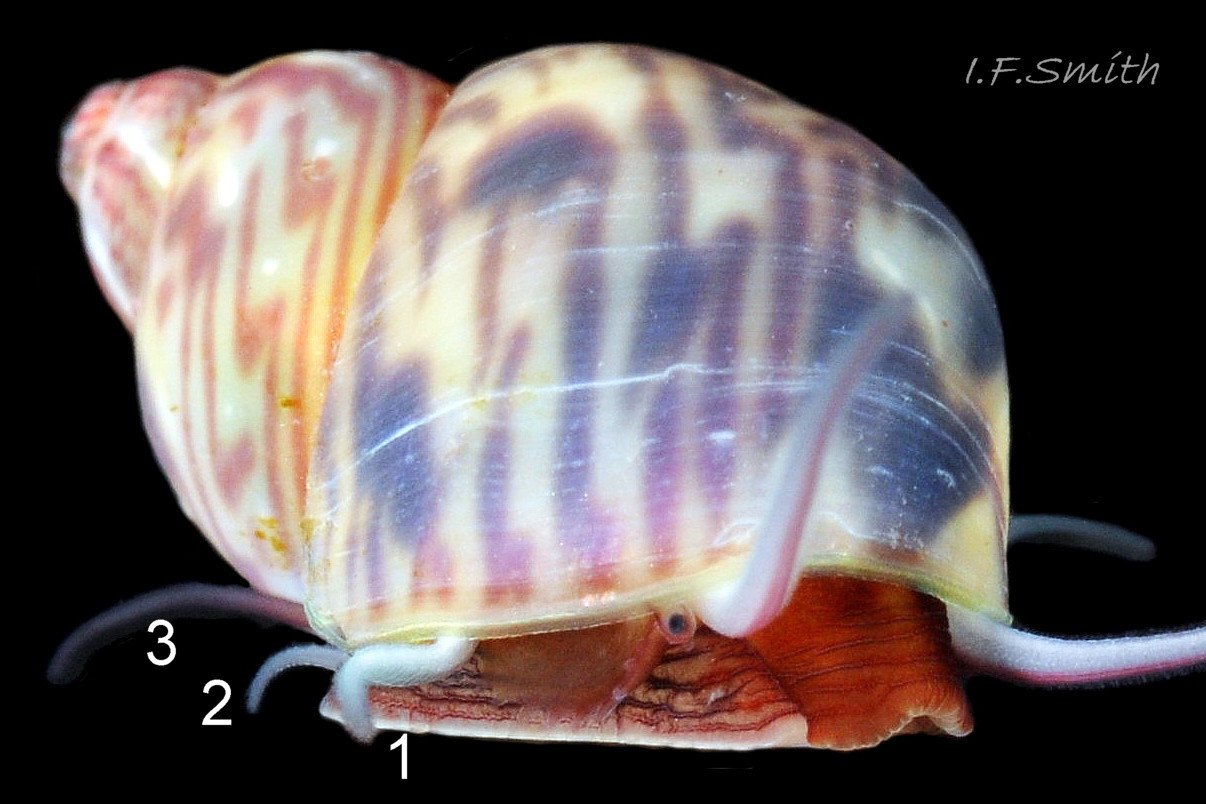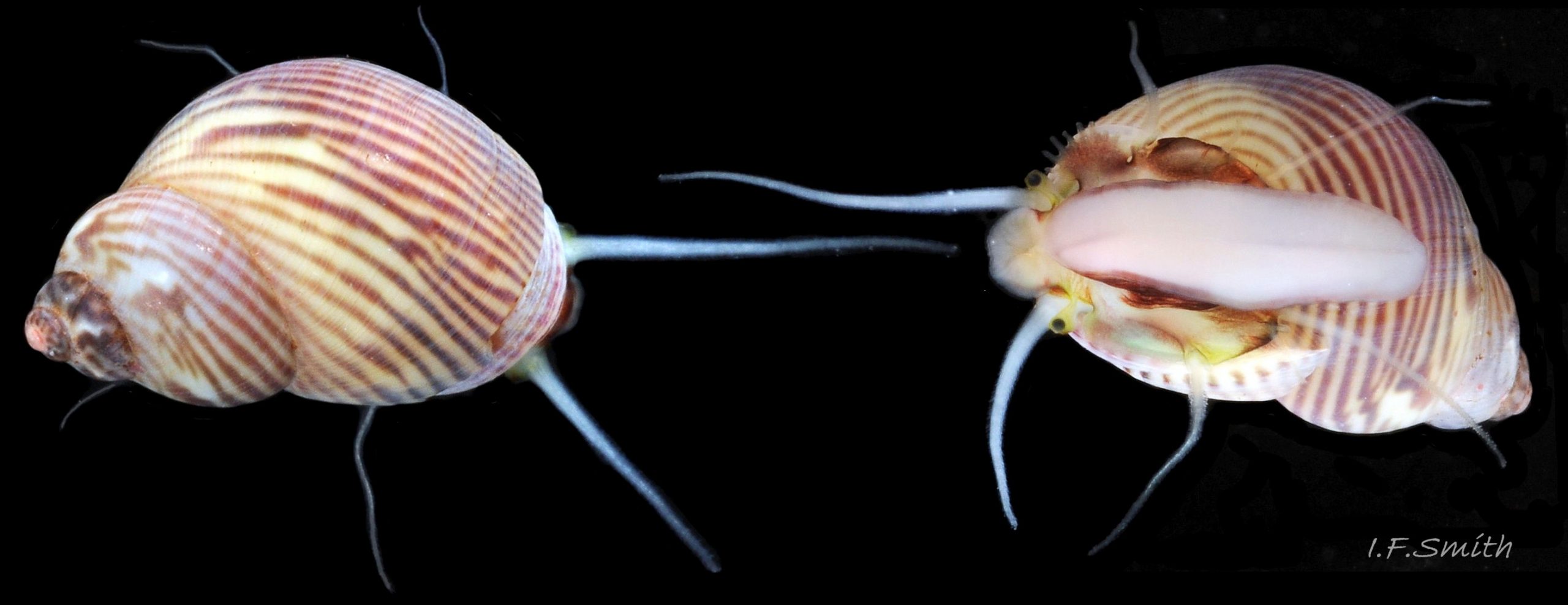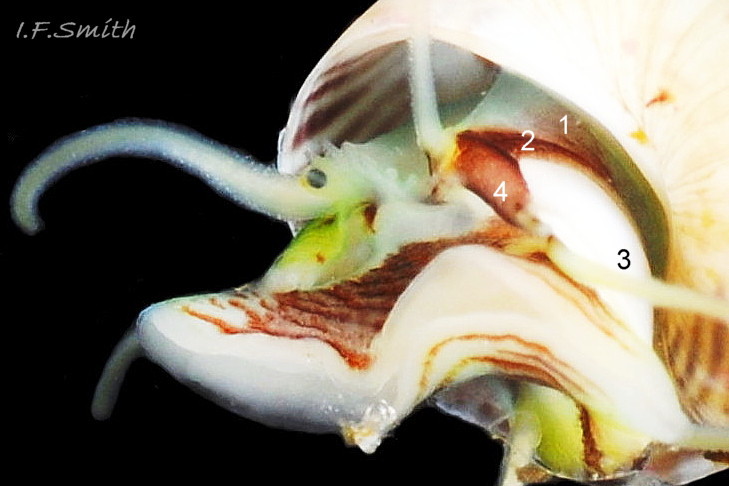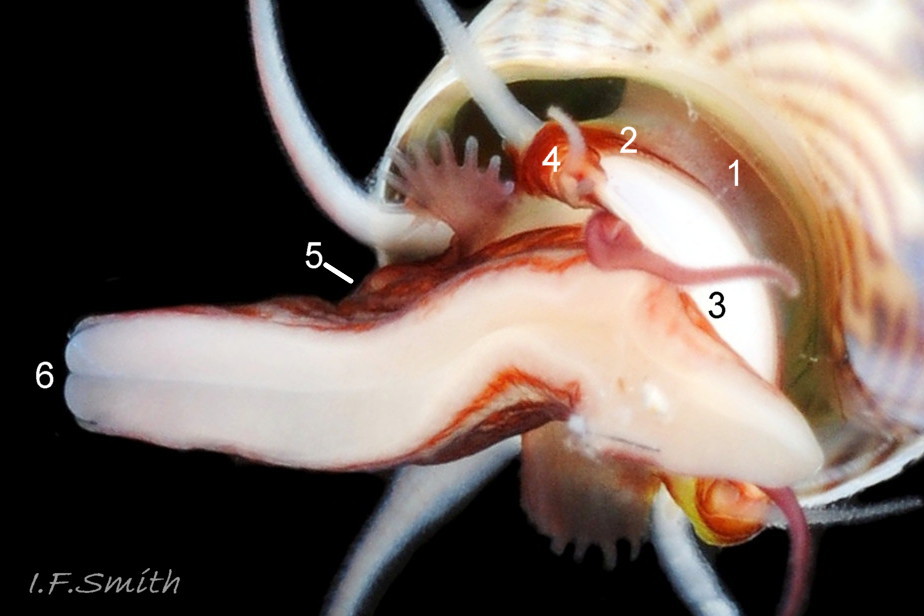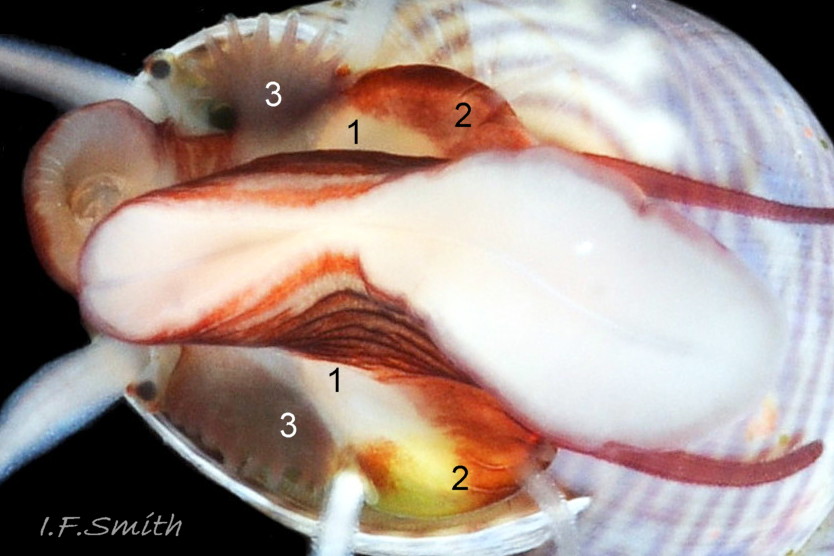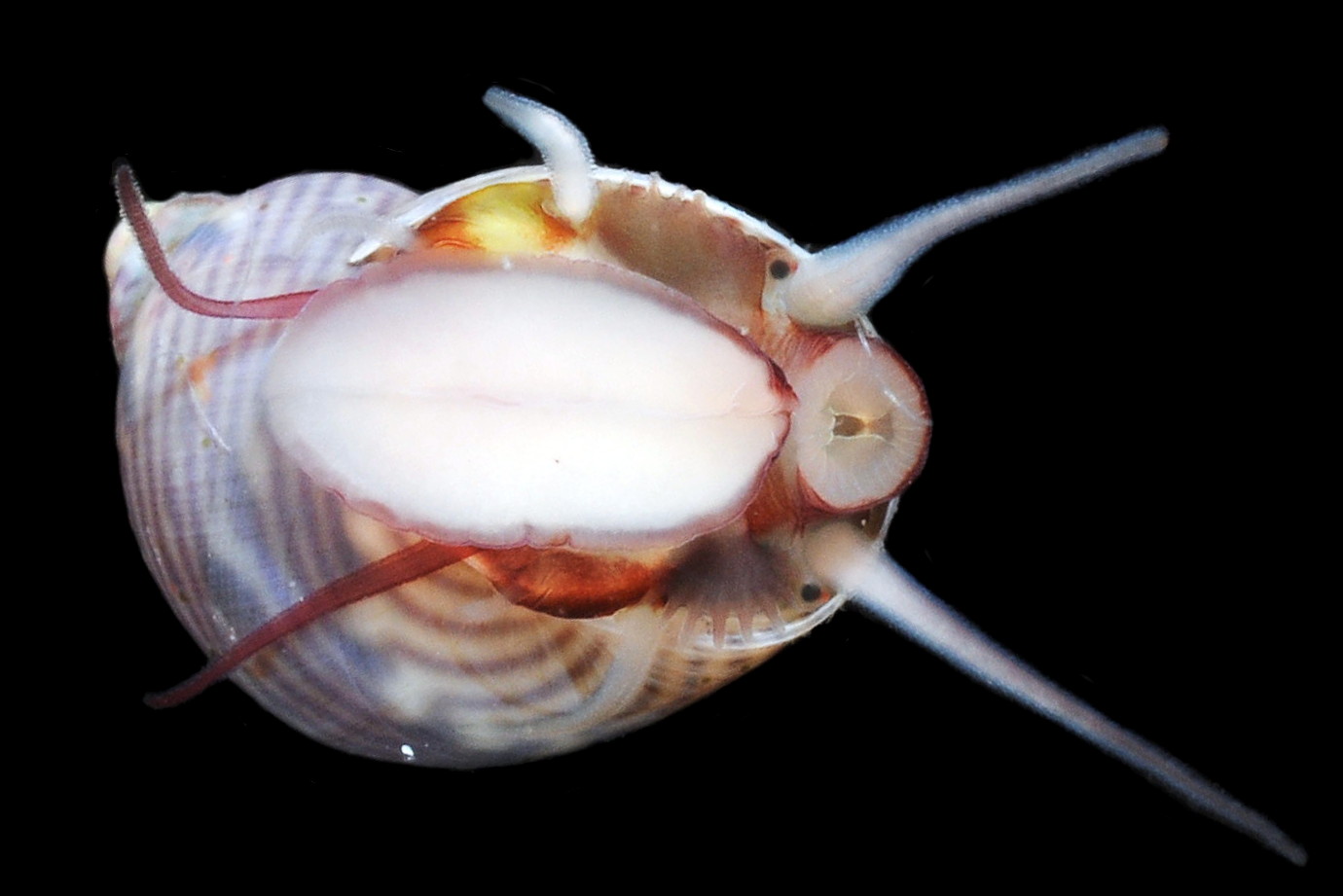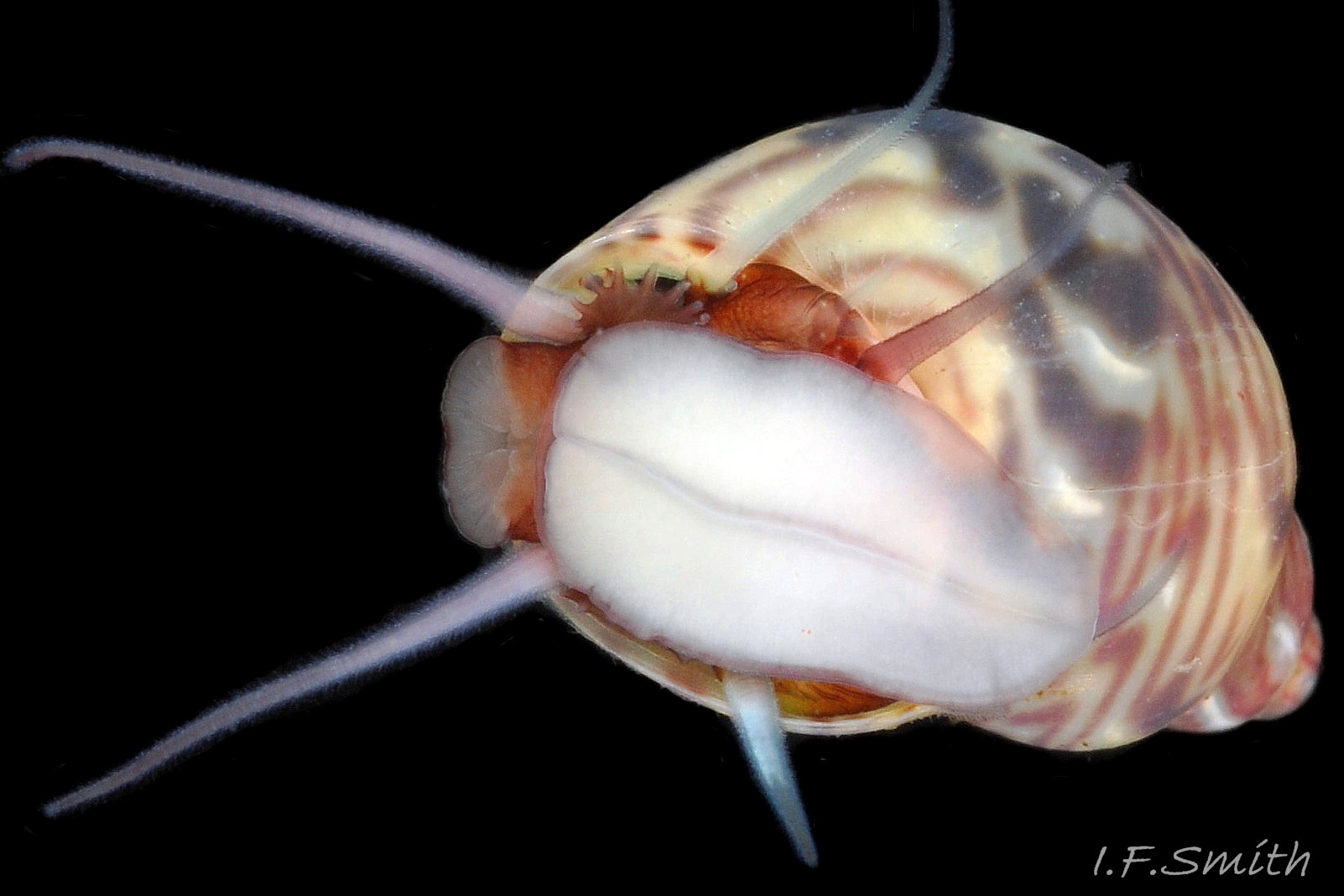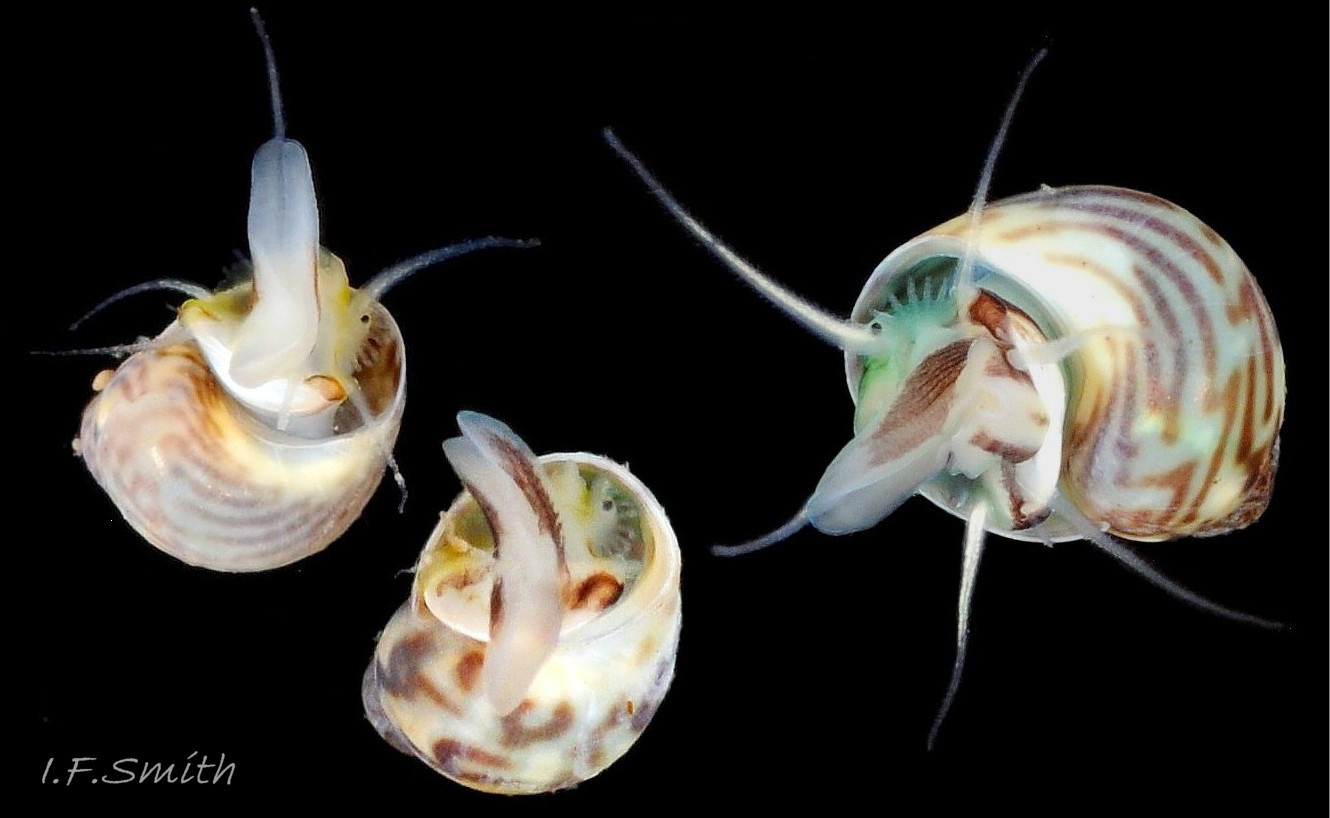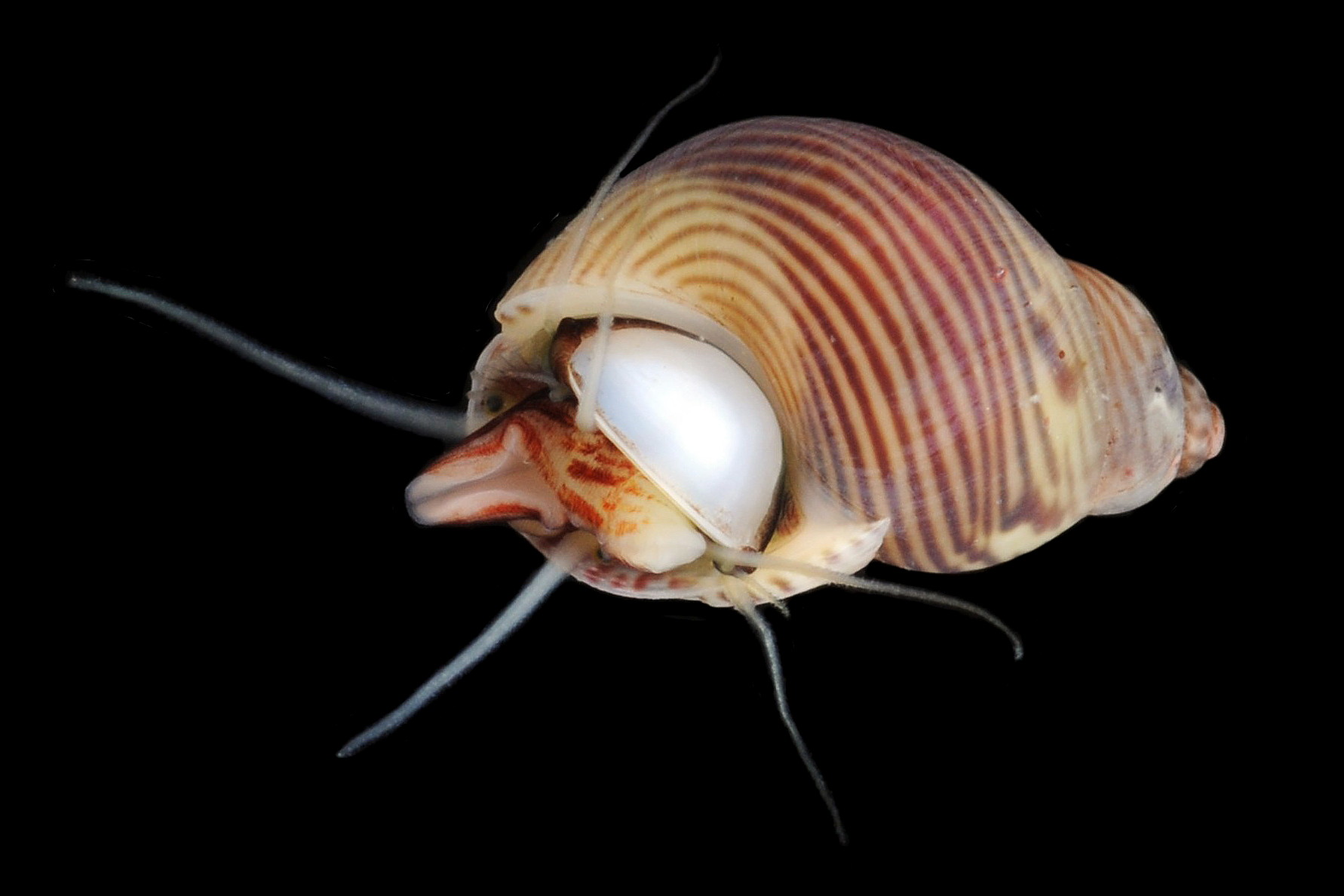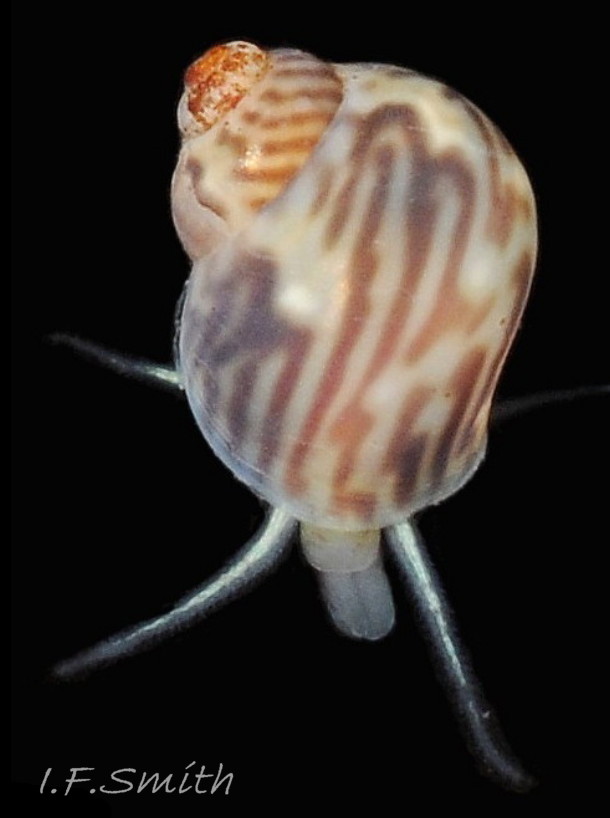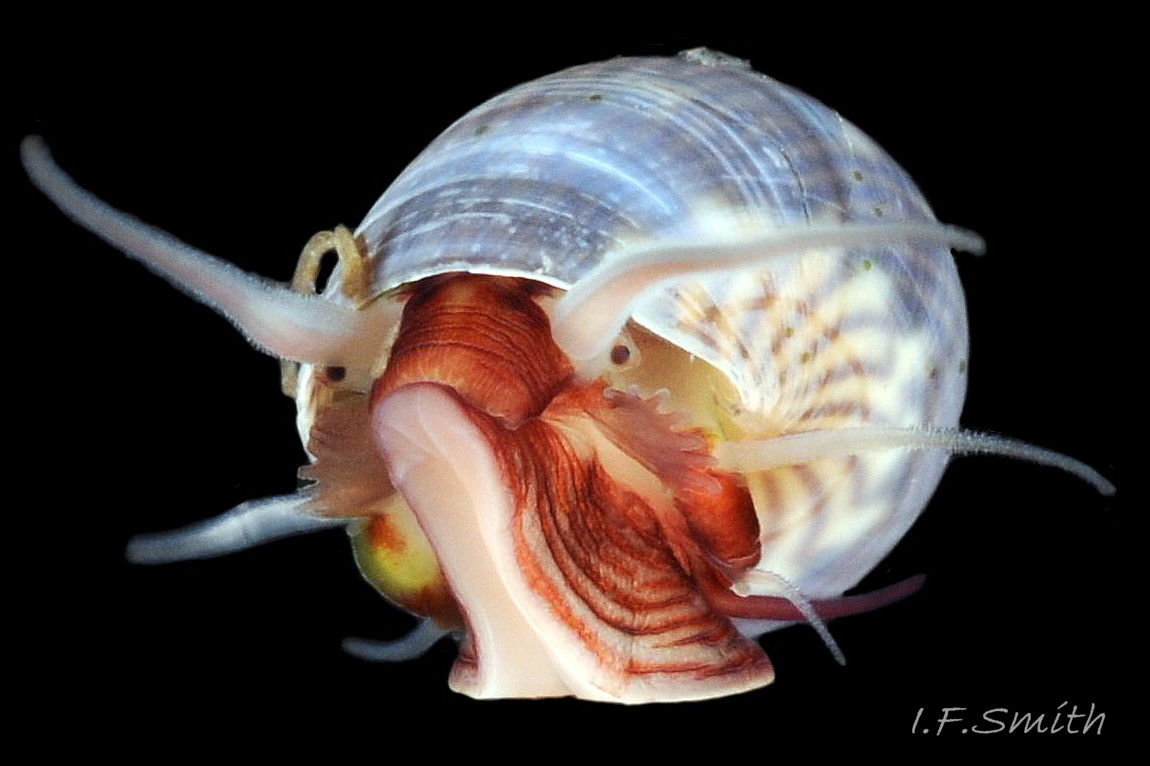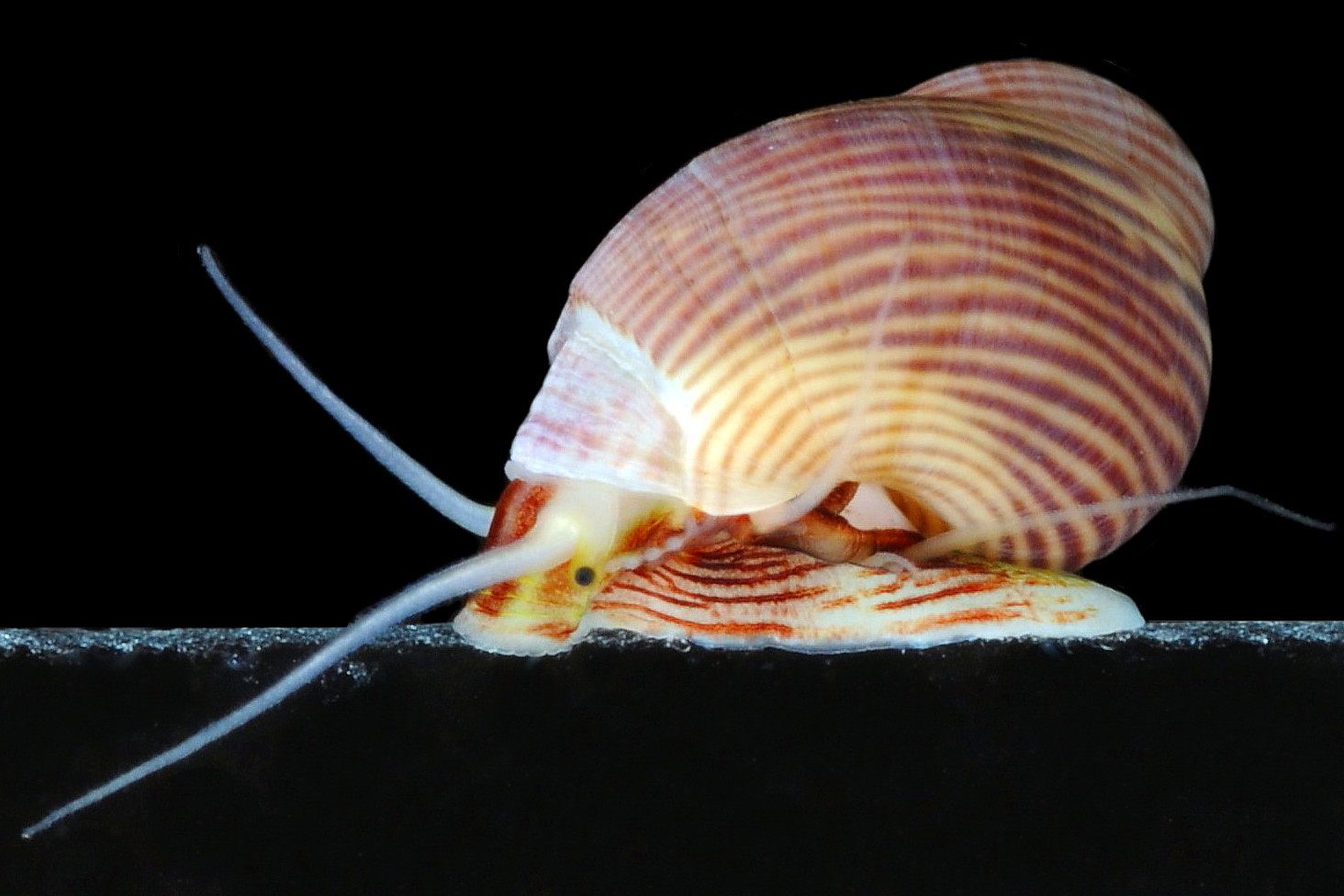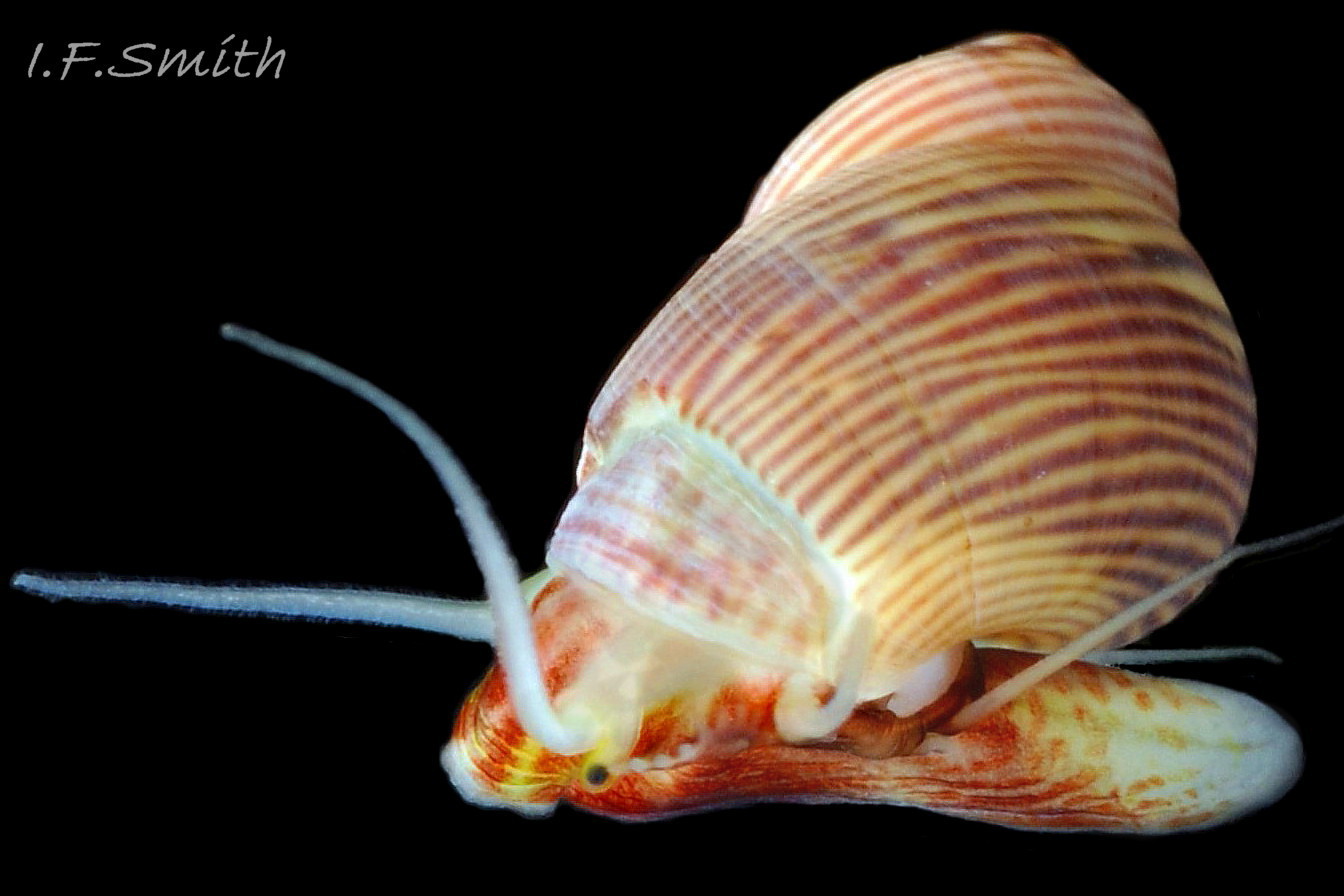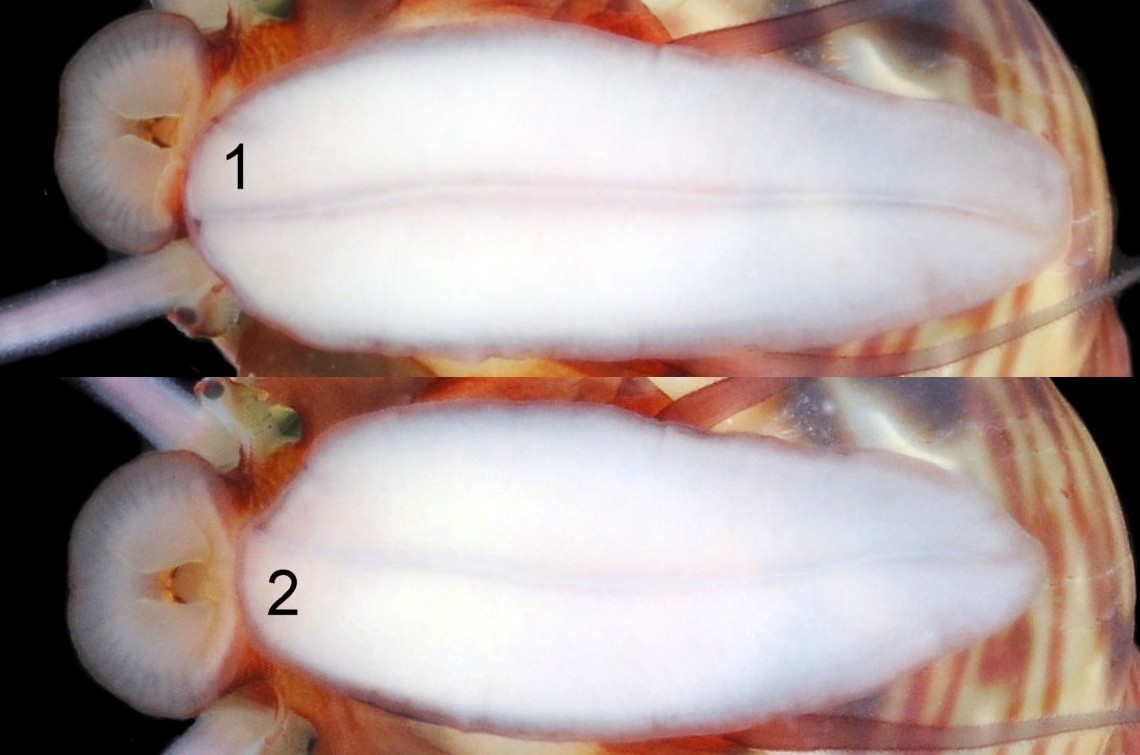Click image to enlarge with full caption. Main text below slider.
Tricolia pullus (Linnaeus, 1758)
PDF available at www.researchgate.net/publication/349608166_Tricolia_pullu…
Current taxonomy: World Register of Marine Species www.marinespecies.org/aphia.php?p=taxdetails&id=141700
“For brilliancy of colouring and diversity of painting, we have nothing comparable among our native shells, to this beautiful little Phasianella.” (Forbes & Hanley, 1849)
Synonyms: Turbo pullus Linnaeus, 1758, Phasienella pullus (Linnaeus, 1758), Tricolia tricolor (Monterosato, 1884).
Vernacular: Pheasant shell, Cragen ffesant (Welsh), Gewone dekselhoren (Dutch).
GLOSSARY below.
Shell Description
The shell is usually up to 7 mm high, exceptionally 10 mm. The spire, conical on adults, is small so the body whorl is about 85% of the shell height ( 01 Tricolia pullus ). The whole adult shell is approximately ovoid, but more spheroid when juvenile ( 02 Tricolia pullus ). The apical angle is about 65°, when adult ( 01 Tricolia pullus ) but wider, about 85°, when juvenile ( 02 Tricolia pullus ). The extreme tip of the apex is blunt as it is formed by the horizontal (when apex uppermost) disc of the protoconch, diameter about 150 μ, ( 03 Tricolia pullus ). The first whorl of the teleoconch often has radiating costae. The rest of the teleoconch has up to six robust, tumid, smooth, glossy whorls. Low magnification may show fine growth lines. Each whorl tilts upwards as it meets the previous whorl to form an incised suture; most clearly seen at the adapical angle of the aperture ( 01 Tricolia pullus ).
The aperture is a teardrop shape and about 50% of the adult height, but about 60% of a 2.4 mm high juvenile ( 04 Tricolia pullus ). The thin, palatal (outer) lip is slightly turned out at the base ( 05 Tricolia pullus ), but this part is often broken off ( 01 Tricolia pullus ). The columellar lip is flat and white with a slight, linear, umbilical depression ( 05 Tricolia pullus ), but no opening apart from a very small one on some juveniles (Fretter and Graham, 1977). The parietal lip is a clouded white glaze on the body whorl ( 01 Tricolia pullus ). The adapical angle of the aperture is about 90°.
The shell colour may be entirely white, pale cream, golden, red, purplish-rose ( 06 Tricolia pullus ), brown or chocolate-brown. Most often, it is whitish with brown (07 Tricolia pullus & 08 Tricolia pullus ), purplish ( 09 Tricolia pullus & 10 Tricolia pullus ) or red ( 01 Tricolia pullus & 11 Tricolia pullus ) blotches ( 12 Tricolia pullus ) and lines which run spirally, transversely and in V’s. The substantial, translucent, but clouded, periostracum often dulls the colour so strandline shells with the periostracum eroded can appear brighter than live ones ( 11 Tricolia pullus ). The tinting of the periostracum can cause white parts to look yellowish ( 02 Tricolia pullus ). If the mantle is green, translucent juvenile shells may be tinted greenish ( 11 Tricolia pullus ). The thick, ear-shaped, oligogyrous, smooth, calcareous, white operculum ( 02 Tricolia pullus & 04 Tricolia pullus ) has a small, eccentric nucleus with raised keel-like edges on its coils. On an active animal, the convex operculum fits neatly against the shell above the mesopodium ( 09 Tricolia pullus & 13 Tricolia pullus ), unlike those species with a, usually flat, operculum of conchiolin on the metapodium.
Body
Unpigmented parts of the flesh are translucent white, yellow ( 08 Tricolia pullus ), pinkish (24 Tricolia pullus & 34 Tricolia pullus ) or lurid green ( 14 Tricolia pullus ) especially on juveniles ( 13 Tricolia pullus ). The amount of pigment increases with age, and it is usually vivid, the most frequent hues, in varied shades, being red, orange, yellow and brown. The edge of the mantle ( 19 Tricolia pullus ) creates the coloured shell exterior.
The short snout is slightly bifid with transverse creases and a scalloped rim. On the translucent juveniles, the internal radula and its surrounding white hyaline shield and organs make an indistinct, tuning fork pattern ( 15Tricolia pullus ), which is often replicated in the pigment pattern on adults ( 16 Tricolia pullus ). The ventral surface of the snout is white. The outer lips of the mouth have radial folds. The inner lips of the vertical slit mouth open sideways to expose the radula and odontophore for feeding ( 17 Tricolia pullus ).
The cephalic tentacles are long, slender and white, with dense, elongate, sensory papillae ( 18 Tricolia pullus ) and, sometimes, longitudinal coloured lines. Between the tentacles, as the base of each, there is often a very small cephalic lappet ( 19 Tricolia pullus ) which is easily overlooked; Robertson (1985, Table 4) lists them as absent from Tricolia species.
There is a black eye on a short peduncle at the base of each cephalic tentacle ( 20 Tricolia pullus ). Behind each peduncle there is a dorsally ciliated, neck lobe. Both lobes are digitated on the free edge, the left one more deeply than the right one ( 21 Tricolia pullus ). Each digitation is tipped with sensory papillae like those on the cephalic tentacles ( 22 Tricolia pullus ).There is an epipodium on each side of the foot usually bearing three papillate epipodial tentacles ( 09 Tricolia pullus & 22 Tricolia pullus), but their length, thickness, number, visibility and colour vary (21 Tricolia pullus , 23 Tricolia pullus & 24 Tricolia pullus ). Very often, the central epipodial tentacle is small and inconspicuous ( 21 Tricolia pullus ) or indistinguishable.
Conchiolin for gastropods with a non-calcareous operculum is secreted by the transverse opercular groove on the dorsum of the body at the anterior of the opercular disc to which the operculum is attached. Kessel (1942, in Fretter and Graham, 1962) opined that on T. pullus the calcareous material of the operculum is created by a ‘deckelsaum’ (opercular flange) which consists of the expanded anterior margin of the opercular disc/posterior lip of the groove, and that conchiolin is applied to its underside by the everted opercular groove. It is difficult to confidently relate photographs of live specimens to Kessel’s description, which may be based on dissections; the following is a tentative interpretation. The opercular groove, the expanded lip of which forms the deckelsaum, is close to the columellar muscle ( 25 Tricolia pullus & 26 26 Tricolia pullus ). The epipodium enfolds the lateral edges of the operculum. The deckelsaum, on the anterior of the exterior face of the operculum, is fused with the epipodium (09 Tricolia pullus & 27 Tricolia pullus ). When the animal is active, the deckelsaum extends over 30-50% of the exterior face of the operculum. A band of pigment, coloured as the adjacent foot and epipodium, runs across the posterior of the deckelsaum, and its anterior is whitish. When the animal is viewed ventrally, the operculum is concealed by the foot and by the opercular disc fused to the neck lobes and epipodial folds ( 28 Tricolia pullus ). When the animal is retracted into the shell, the deckelsaum is retracted so only the convex, white, calcareous exterior of the operculum is visible (02 Tricolia pullus & 04 Tricolia pullus ).
The foot outline is an ellipse, long or short depending on extension ( 19 Tricolia pullus , 26 Tricolia pullus & 29 Tricolia pullus ). The sole is bilaminate and slightly bifid at the anterior ( 26 Tricolia pullus ) and has a large, longitudinal furrow ( 30 Tricolia pullus ) along which the foot is often folded (28 Tricolia pullus , 31 Tricolia pullus & 32 Tricolia pullus ) or rolled ( 19 Tricolia pullus ). The anterior of the foot is very flexible and able to attenuate and extend far forward of the snout ( 19 Tricolia pullus , 26 Tricolia pullus & 33 Tricolia pullus ). When travelling, the sides left and right of the central furrow project forward alternately (21 Tricolia pullus & 38 Tricolia pullus ). The sole is usually translucent white or, sometimes, pink ( 34 Tricolia pullus ). About six red or brown lines run along each side of the foot; the intervening spaces may be white ( 35 Tricolia pullus ), yellow ( 08 Tricolia pullus ), or reddish (36 Tricolia pullus & 09 Tricolia pullus ).
On the metapodium, the lines are discontinuous and less saturated with colour, so it is paler than the sides of the foot ( 37 Tricolia pullus ). The medial dividing line of the foot is visible on the metapodium, which lacks the opercular disc and operculum found on other north European marine gastropods as it is situated further forwards on T. pullus.
Fertilization is external, so there is no penis on males.
Key identification features
No other gastropod in north-west Europe has the diagnostic white, calcareous operculum or similar colour patterns on the shell.
Similar species
Several related species with white calcareous opercula live in southern Europe and the Mediterranean; details in Gofas (1982).
Habits and ecology
T. pullus lives in non-turbid water with currents less than 1.5 knots (juveniles) or 3 knots (adults) in rock pools or shallow water at ELWS of rocky shores, and on coarse rubble bearing red algae to 35 m, or more, depth. It feeds on small red algae and on diatoms and detritus on their surfaces. Faeces are strings with a longitudinal groove ( 19 Tricolia pullus ). The abundance of T. pullus per dm2 is up to 8 on Lomentaria (mainly holdfasts), 7 on Laurencia, 3 on Corallina (mainly holdfasts), 2-3 on Gigartina and at lower densities on Plumaria, Chondrus, Nitophyllum and Ceramium (Fretter & Graham, 1977). The predominantly red blotches, streaks and lines on the shell camouflage it on these algae.
The flexible, agile foot enables T. pullus to maintain position among the algae and to rapidly grip onto something and right itself if it is dislodged. Cilia on the dorsal surface of its deeply digitated left neck lobe create an inhalent current above it, clear of detritus, to the ctenidium within the mantle cavity. Cilia on the right neck lobe create an exhalent current.
T. pullus travels with a shuffling motion caused by alternately advancing the foot on either side of the medial furrow ( 38 Tricolia pullus ). As it advances, it swings its snout from side to side, feeding as it goes.
T. pullusbreeds in most months of year. External fertilization occurs when orange ova are released singly from the mantle cavity into the plankton. Free living trochophore larvae hatch after ten hours and soon metamorphose into veliger larvae, initially planktonic, but benthic three days after hatching. They metamorphose, mainly on holdfasts of the food algae, into adult form four and a half days after hatching with a shell height of about 1.1 mm (Fretter & Graham, 1977).
Distribution and status
Black Sea, Mediterranean, Canary Isles, Azores to Orkney, but not Baltic. GBIF map www.gbif.org/species/2293404 . All round Ireland, south and west coasts of Britain to Orkney, Scarce or absent in North Sea and north-east Irish Sea. U.K. NBN map species.nbnatlas.org/species/NBNSYS0000178432#tab_mapView
Acknowledgements
I am most grateful to David Herbert for his information and advice. Any remaining errors or omissions are my responsibility. I thank Guy Freeman for use of his image.
Links and references
Forbes, E. & Hanley S. 1849-53. A history of the British mollusca and their shells. vol. 2 (1849), London, van Voorst. (As Phasianella pullus) archive.org/details/historyofbritish02forb/page/538/mode/2up
Fretter, V. 1955. Some observations on Tricolia pullus (L.) and Margarites helicinus
(Fabricius). Proceedings of the Malacological Society of London 31: 159-162.
Fretter, V. and Graham, A. 1962. British prosobranch molluscs. London, Ray Society.
Fretter, V. and Graham, A. 1977. The prosobranch molluscs of Britain and Denmark. Part 2 – Trochacea. Suppl. 3, J. Moll. Stud.
Gofas, S. 1982. The genus Tricolia in the eastern Atlantic and Mediterranean. Journal of Molluscan Studies 48 (2): 182–213.
Graham, A. 1988. Molluscs: prosobranch and pyramidellid gastropods. Synopses of the British Fauna (New Series) no.2 (Second edition). Leiden, E.J.Brill/Dr. W. Backhuys. 662 pp.
Jeffreys, J.G. 1862-69. British conchology. vol. 3 (1865). London, van Voorst. (As Phasianella pulla). archive.org/details/britishconcholog03jeffr/page/338/mode…
Kessel, 1942. Über Bau und Bildung des Prosobranchier-Deckels. Z. Morph. Ökol. Tiere, 38: 197-250.
McKay, D.W. & Smith, S.M. 1979. Marine Mollusca of East Scotland. Royal Scottish Museum, Edinburgh.
Nangammbi, T. C. and Herbert, D. G. 2006. Two new species of Tricolia Risso, 1826 from South Africa (Mollusca: Gastropoda: Phasianellidae). African Invertebrates 47: 11–22. www.researchgate.net/publication/260189801_Two_new_specie…
Robertson, R. 1985. Archaeogastropod biology and the systematics of the genus Tricolia (Trochacea: Tricoliidae) in the Indo–West–Pacific. Monographs of marine Mollusca 3: 1-103.
Current taxonomy: World Register of Marine Species www.marinespecies.org/aphia.php?p=taxdetails&id=141700
Glossary
abapical/adapical = away from/towards the apex of the shell.
acuminate = tapering to a point.
aperture = mouth of gastropod shell; outlet for head and foot.
bifid = divided into two parts by a cleft.
calcareous = made of calcium carbonate.
cephalic = (adj.) of or on the head.
cephalic lappets = pair of flaps on head between the cephalic tentacles.
cilia = (pl.) mobile linear extensions of membrane used in feeding or locomotion.
ciliated = (adj.) coated with cilia.
columella = axis around which gastropod shell spirals; hidden inside shell, except on final whorl next to lower part of inner lip of aperture where hollow ones may end in an umbilicus.
columellar =(adj.) of or near central axis of spiral gastropod.
columellar lip = lower (abapical) part of inner lip of aperture.
conchiolin = horny flexible protein that forms the operculum of most marine gastropods.
costa = (pl. costae) rib across whorl of a gastropod shell at about 90° to direction of coiling.
ctenidium = comb-like molluscan gill; usually an axis with a row of filaments either side.
deckelsaum = (opercular flange) expanded anterior margin of the opercular disc/posterior lip of the opercular groove, which creates the calcareous operculum of T. pullus.
diatom = microscopic aquatic alga with siliceous cell-walls.
digitated = with lobes on the edge arranged like the fingers of a hand.
dm2 = square decimetre, m-2, 10cm X 10cm.
ELWS = extreme low water spring tide (usually near March and September equinoxes).
epipodial = (adj.) of the epipodium.
epipodium = (pl. epipodia) collar along sides of foot of some gastropods.
everted = turned inside out.
height = (H., abbreviation ) distance from apex of spire to base of aperture on gastropods.
mantle = sheet of tissue that forms the shell and a cavity for the gill in marine molluscs.
mesopodium = middle section of a gastropod foot.
metapodium = hind part of the foot.
odontophore = muscles and cartilages which support the radula.
oligogyrous = (of a spiral) having few turns.
opercular = (adj.) of the operculum.
opercular groove = groove across dorsum of foot which produces conchiolin for creation of operculum to its posterior. Groove is everted on Tricolia.
opercular disc = part of foot attached to operculum.
opercular lobe = extension of opercular disc round edge of part of operculum.
operculum = plate of horny conchiolin, calcareous on T. pullus, used to close shell aperture.
papillae = (pl.) conical or acuminate sensory structures.
papillate = covered with papillae.
parietal lip ( or parietal wall) = upper part of inner side of gastropod aperture, often lacking clear lip structure with just a glaze on side of whorl adapically of columellar lip.
peduncle = stalk on body bearing an organ.
periostracum = thin horny layer of chitinous material often coating shells.
plankton = animals and plants that drift in pelagic zone (main body of water).
protoconch = apical whorls produced during embryonic and larval stages of gastropod.
radula = chitinous ribbon of teeth; extended on odontophore to gather food.
suture = groove or line where whorls of gastropod shell adjoin.
teleoconch = entire gastropod shell other than the apical protoconch.
trochophore = spherical or pear-shaped larvae that swim with aid of girdle of cilia. Stage preceding veliger, passed in gastropod egg in most spp. but free in plankton for T. pullus.
tumid = bulging, distended, swollen, distinctly convex
umbilicus = cavity up axis of some gastropods, often open as a hole or chink on base of shell.
veliger = shelled larva of marine mollusc which swims by beating cilia on a velum (flap).
